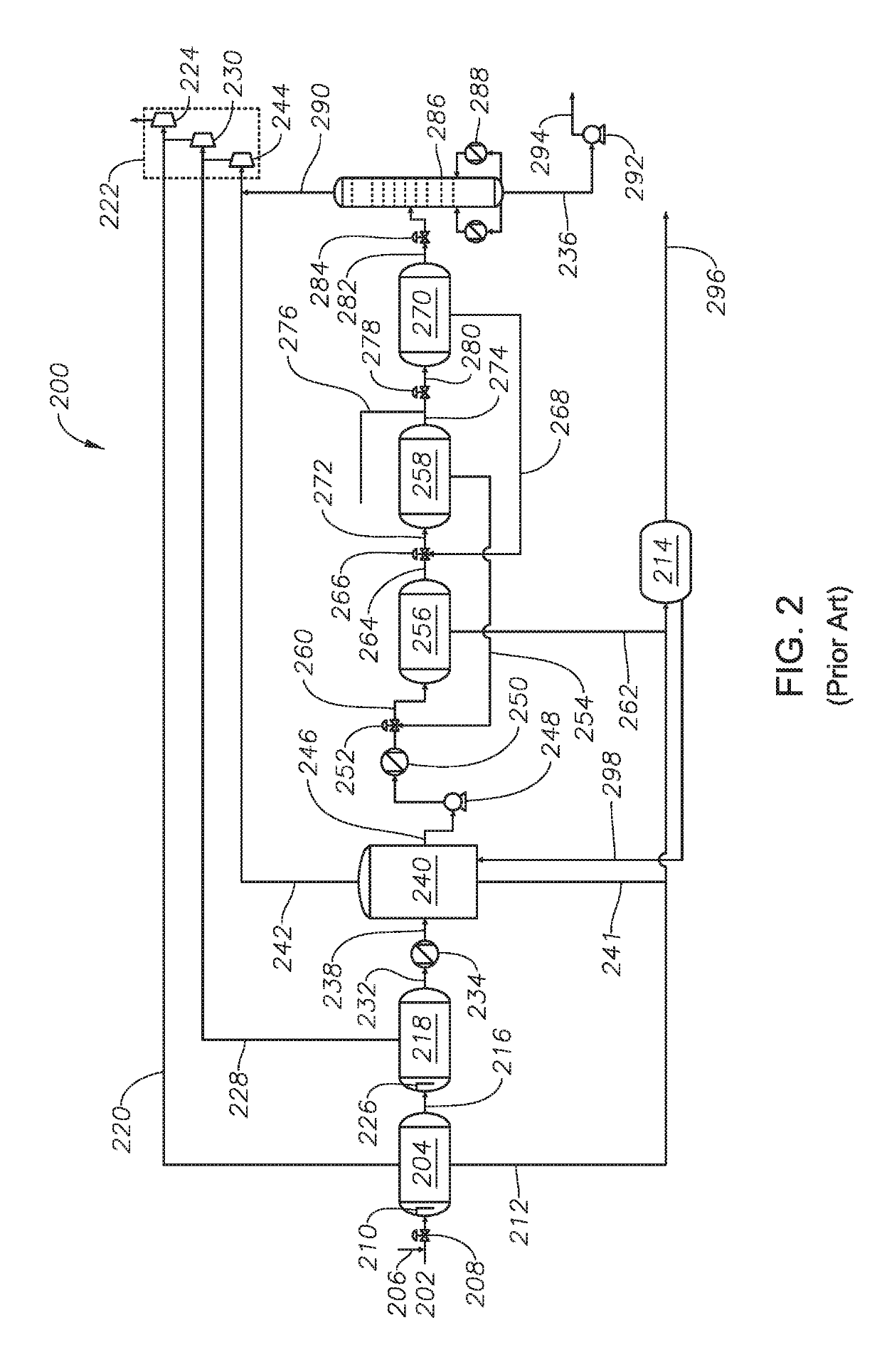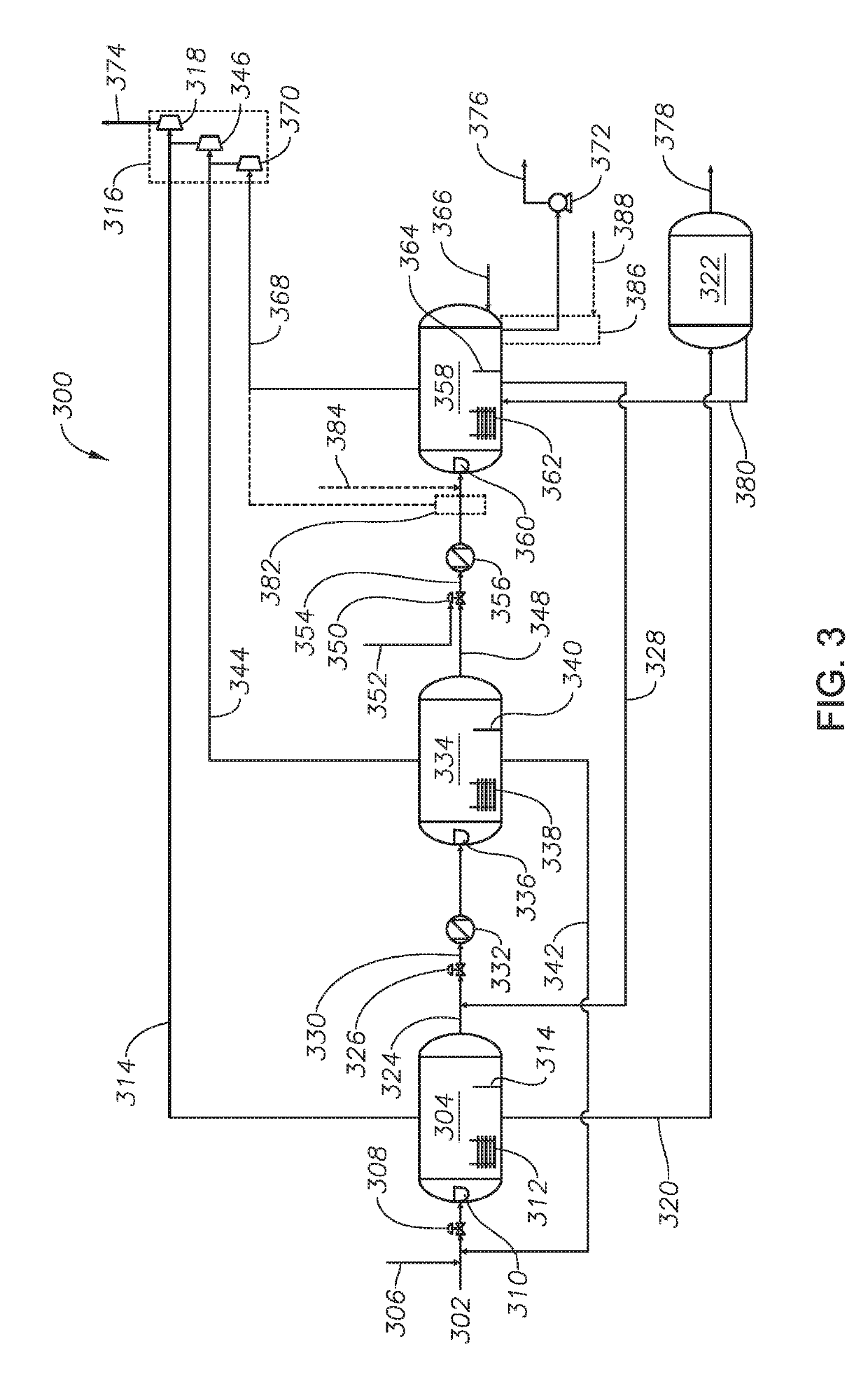Simultaneous crude oil dehydration, desalting, sweetening, and stabilization
a crude oil and shale technology, applied in the field of gas oil separation plant (gosp) technology, can solve problems such as instability and safety hazards, and achieve the effect of reducing the amount of fresh wash water and reducing pressur
- Summary
- Abstract
- Description
- Claims
- Application Information
AI Technical Summary
Benefits of technology
Problems solved by technology
Method used
Image
Examples
Embodiment Construction
[0038]While the disclosure will be described in connection with several embodiments, it will be understood that it is not intended to limit the disclosure to those embodiments. On the contrary, it is intended to cover all the alternatives, modifications, and equivalents as may be included within the spirit and scope of the disclosure defined by the appended claims.
[0039]Referring first to FIG. 1, a flow chart is provided showing three stages in a conventional GOSP system and process for processing crude oil from production wells in a hydrocarbon-bearing formation. In a first stage, gas, crude oil, and free water are separated. In a second stage, crude oil is dehydrated and desalted to separate emulsified water and salt to meet certain basic sediment and water (BSW) specifications. In a third stage, crude oil is stabilized and sweetened to meet hydrogen sulfide (H2S) and Reid Vapor Pressure (RVP) specifications. Generally, sour crude oil refers to any crude oil with a total sulfur le...
PUM
| Property | Measurement | Unit |
|---|---|---|
| true vapor pressure | aaaaa | aaaaa |
| pressure | aaaaa | aaaaa |
| temperature | aaaaa | aaaaa |
Abstract
Description
Claims
Application Information
 Login to View More
Login to View More - R&D
- Intellectual Property
- Life Sciences
- Materials
- Tech Scout
- Unparalleled Data Quality
- Higher Quality Content
- 60% Fewer Hallucinations
Browse by: Latest US Patents, China's latest patents, Technical Efficacy Thesaurus, Application Domain, Technology Topic, Popular Technical Reports.
© 2025 PatSnap. All rights reserved.Legal|Privacy policy|Modern Slavery Act Transparency Statement|Sitemap|About US| Contact US: help@patsnap.com



